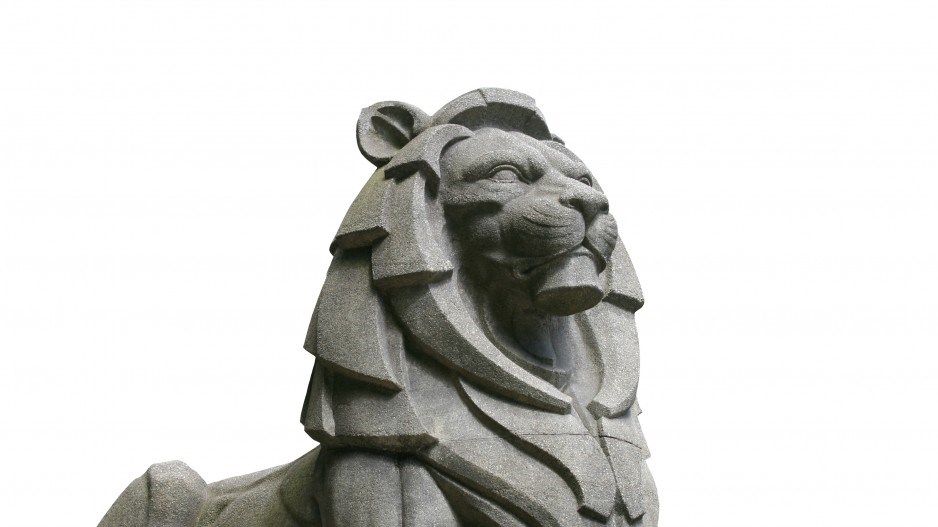Vancouver is a city built on immigration.
While First Nations people have been living in the area for thousands of years, and early settlers primarily came from Great Britain, many other cultures have become integral pieces of the local culture. One significant population that's been here since the founding of Vancouver are Italians.
While no streets or parks carry Italian names, there are more than a few signs of Italian culture and influence around the city, historical and current. Here are a few things you (probably) didn't know about that.
1. The Lions Gate Bridge lions were designed by an Italian-Canadian sculptor
The Lions Gate Bridge is adorned with a pair of noble lions on the south end, really leaning into the bridge's name. The pair are probably the most well-known pieces of work by Charles Marega.
Technically, he wasn't born in Italy, but in the Austro-Hungarian Empire. However, the town he was born in is in modern-day Italy, near the border with Slovenia. Marega went on to study in Italy and other parts of Europe before eventually making his way to Vancouver where he became a popular sculptor for some big and small projects at the time.
"At one point he made 'sculpted concrete garden gnomes' as a sideline business to support himself," Ilaria Baldan, executive director of the Italian Chamber of Commerce in Canada - West, tells Vancouver Is Awesome. "Many of these were in people's front yards across the city."
Along with the two lions, Marega created the Joe Fortes Memorial Fountain and several statues that are part of the legislative buildings in Victoria.
2. Vancouver's Little Italy wasn't always on Commercial Drive
These days the heart of Italian culture in Vancouver is often considered Commercial Drive, where several Italian businesses have been going for years.
However, that's not always been the case. When the major wave of Italian immigrants made their way to Vancouver many settled in Strathcona
"Thus, in the early 20th century, Strathcona was ‘Little Italy.’ The neighbourhood was home to a number of pioneering Italian businesses including, Crosetti’s on Main Street, Benny’s Italian Market, Minichiello’s Grocery (later Union Market) and Giuriatti’s, all on Union Street," writes civic historian John Atkin in a report to the city.
However, over time the population spread out over East Vancouver and Commerical Drive became the commercial hub. By the 1970s 'Little Italy' had come to mean Commerical Drive and Strathcona's Italian area faded.
3. The City of Vancouver apologized for mistreating Italian-Canadians during Second World War
Earlier this summer Vancouver's city council apologized for actions taken in the early 1940s.
While the internment Japanese-Canadians is well known, a similar thing happened to a smaller extent to Italian-Canadians, including 33 Vancouver residents who had connections to the Fascist Party of Canada. They were rounded up and transported to internment camps out of the province.
Lino Pasqualini's dad, who owned a bakery, was one of them.
“He didn't join the Fascist Party for political reasons. He joined because Mussolini promised all expatriates a free trip to Italy for a golden jubilee. And he wanted so badly to introduce my older sister and myself to our grandparents, who we never had the pleasure to meet,” Pasqualini told city council earlier this year, when the apology was officially issued.
4. Vancouver has an Italian Garden
Tucked up in Hastings Park is 'Il Giardino Italiano', or 'The Italian Garden,' based on traditional Italian gardens.
Created in 2000 it has a variety of parts to it, including an 'Opera Walk,' sculptures and fountains (with sculpted spouts). There's also a 'feast area' and Bocce courts.
Among the sculptures is one dedicated to Italian Immigrants; there used to be one of a young Christopher Columbus as well, but according to the Vancouver Sun it's been put into safe keeping.
Tucked away next to the Hasting Park skatepark, the garden is currently inside the PNE grounds.
5. A Metro Vancouver cyclotron uses Italian magnets for clinical nuclear medical diagnostics in the Pope's hospital
The Agostino Gemelli University Policlinic is the second largest hospital in Italy; located in Rome, it's the hospital used by popes, and in 2004 the Pope was involved in purchasing a very specialized, multi-million dollar piece of equipment, an Advanced Cyclotron Systems Inc. cyclotron, according to Baldan.
Cyclotrons are used to create specialized radioactive atoms used by doctors for the diagnosis of internal issues.
ACSI and its parent company Ebco Industries are based in Richmond. As cyclotrons rely on magnets to accelerate particles, ACSI needs a good source for the massive (1,428 kg.) magnets they use. And for that, they look to Forgia di Bollate, a company located in northern Italy.
Bonus
The Italian Cultural Centre is the heart of many Italian cultural activities in the city. That's probably not a surprise, but what you might not know is that they run an Italian library for their members.




